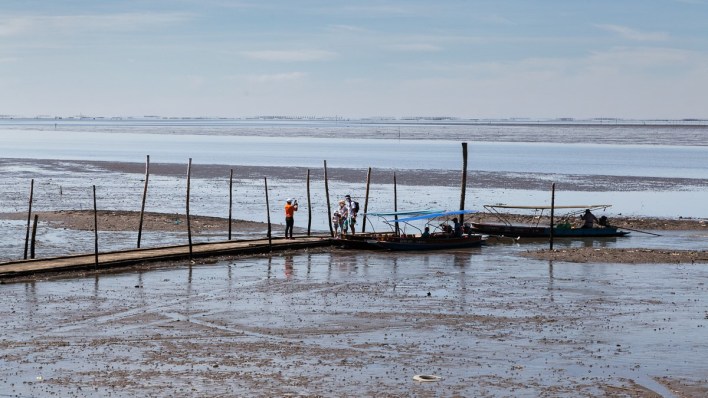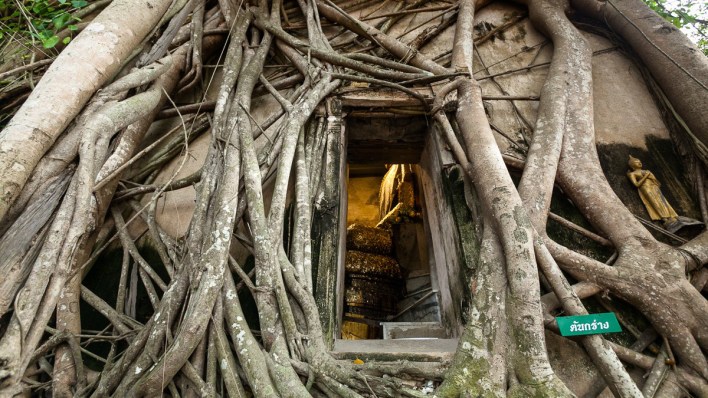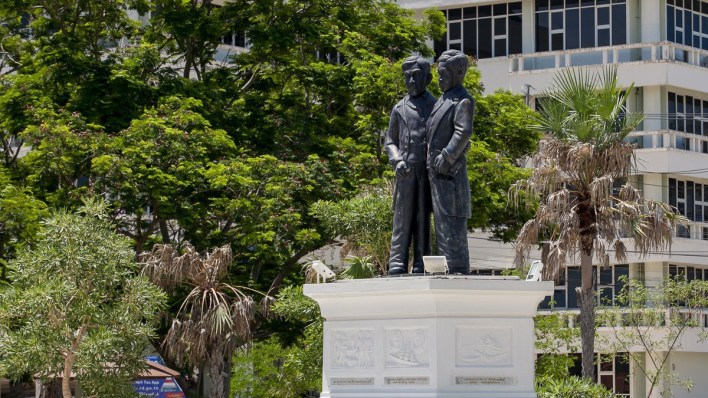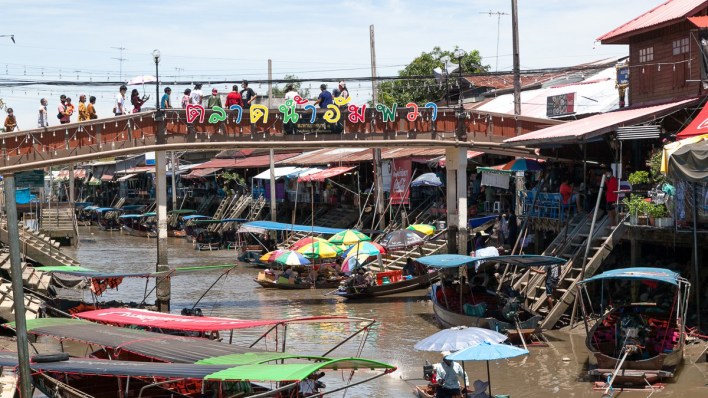Although it is the smallest in size of Thailand’s provinces, Samut Songkhram offers numerous unique attractions. The Mae Klong River passes through the province; it is surrounded by various tourist attractions. Places of interest can also be found in the canals connected to the river and on the coastline, attracting both international and local tourists.
Floating markets are exceedingly popular with travellers in Thailand, and Samut Songkhram is blessed with several that each in its own way is well worth a visit. The Amphawa Floating Market is probably the best known of the lot, and when compared to Thailand’s famous Damnoen Saduak Floating Market, is not yet overrun by flag following group tours. There are also many local Thai visitors going about their daily shopping, which adds to the authenticity and charm.
 Amphawa Floating Market
Amphawa Floating Market
Amphawa tends to be quite busy on the weekends because of its special riverfront markets that attract day trippers from Bangkok, so it is worth checking out Amphawa in the middle of the week before the weekend crowds arrive.
The boat tour at the Amphawa Floating Market winds through the small canals and along the Mae Khlong River. A private tour starts at 500 Baht, but if you join a shared boat tour with some other visitors, it starts from only 50 Baht a head with space for up to 10 people. A tour takes approximately 1 hour and will take you along the Market and to some temples at the river.
The destination’s other notable floating markets include Bang Noi Floating Market, Tha Kha Floating Market, Bang Nok Khwaek Floating Market, and Don Manora Floating Market. There are also many local Thai visitors going about their daily shopping at each of these, which adds to the authenticity and charm.
Don Hoi Lot is located on a sandbar at the mouth of the Mae Klong River created by the sedimentation of sandy soil or Khi Pet sand as called by the locals. It occupies a vast area of 3 kilometres wide and 5 kilometres long. There are many types of shellfish in the area but mostly are razor clams. Don Hoi Lot is a famous place to find fresh and dried seafood, including many other local goods. Seafood dining is also available along the whole road.
 Don Hoi Lot
Don Hoi Lot
GOT NEWS? click here
Google News, Bing News, Yahoo News, 200+ publications
Wat Bang Kung, which dates from the Ayutthaya period, still has an ancient beauty about it that draws in visitors. For 200 years, the temple was forgotten, and the local jungle closed in. It was restored in 1967, but the whole building remains covered with the mighty roots of the banyan tree that grows above it. The vines and roots bind and squeeze the building, holding it together as though protecting it. Inside there are some ancient murals and an impressive Buddha image. Also at the temple, there are dozens of life-sized statues of Muay Thai fighters illustrating the dance-like moves of the martial art.
 Wat Bang Kung
Wat Bang Kung
One of the region’s more unusual attractions is the Chang-Eng Siamese Memorial. The twin statues were built in memory of the famous conjoined twins Chang and Eng, the Siamese twins who made Thailand famous around the world. A hall features the biography of Chang and Eng, who are Samut Songkhram natives born in 1811. The twins met an American trader who brought them on a sailing voyage to the United States where they were met by a fascinated public, before passing away at 63 years of age, having made their nationality, Siamese, synonymous with their condition.
 Chang-Eng Siamese Memorial
Chang-Eng Siamese Memorial
Getting to Samut Songkhram is easy. Many visitors arrive from Bangkok by taxi, minivan, or a booked tour. The cheapest option is usually a minivan, as buses are usually a little bit more expensive for the nearly 2-hour drive. Most start at the Mo Chit Bus Terminal in North Bangkok or Sai Tai Mai Bus Terminal in South Bangkok.
Another alternative is by train. Here you can take the train from Thon Buri Railway Station, change once in Mahachai and take another train directly into the Mae Klong Railway Market of Samut Songkhram.







